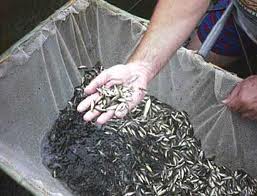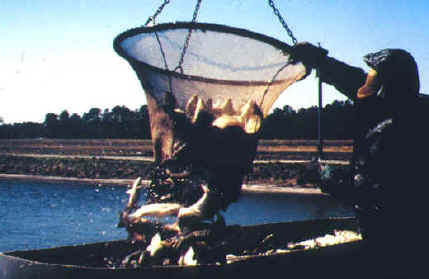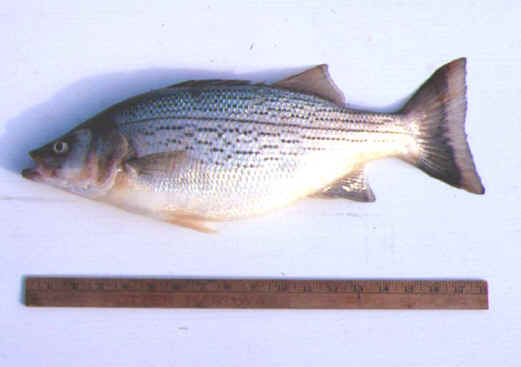Home<Our Region<Hybrid Striped Bass
SRAC: Hybrid Striped Bass



Hybrid striped bass culture began in the southeastern U.S. in the late 1980s and has rapidly developed into a major aquaculture industry. Almost every state in the southern region has hybrid striped bass producers, but most of the production is in Mississippi, North Carolina, Texas, Florida, Louisiana, and South Carolina. In 1997, the total regional production of hybrid striped bass was an estimated 5 million pounds, about 50% of total U.S. production, with a farm-gate value of approximately $12.5 million. The industry has been expanding at a rate of 10-15% per year for the past five years.
Most farm-raised hybrid striped bass are made in the hatchery by fertilizing female white bass (Morone chrysops) eggs with sperm from male striped bass (Morone saxatilis). This cross produces a fish which is sometimes called a sunshine bass or reciprocal cross hybrid striped bass. The hybrid is distinguishable from one of its parents, the striped bass, by the broken horizontal lines that run along the sides of its body. Hybridization of the white bass and the striped bass produces a fish with a greater tolerance to extremes in temperature and dissolved oxygen than either of its parents and is thus better suited for pond culture.
The majority of hybrid striped bass producers in the southern region raise their fish in freshwater ponds. Most producers are involved with the growout phase of production and purchase their fry or fingerlings from hatcheries. At 18 to 24 month of age (1 - 2 lb.), marketable hybrid striped bass are harvested by seine and immediately packed whole on ice for shipment to market. No additional processing is needed until the fish reach the consumer.
